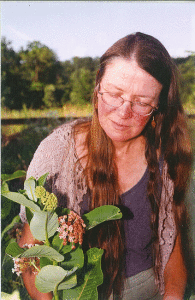Have You Tried Chia Seeds?
Have you ever tried chia seeds? They are tiny and packed with nutrition, and are becoming quite popular.
Chia seeds are tiny black seeds from the plant Salvia hispanica, which is related to the mint. Chia seeds date back to the Aztec and Mayans times and were found primarily in Mexico; they were prized for their ability to provide sustainable energy and used for medicinal and nutritional benefits. In the 1990s, American scientists took note of this nutritional powerhouse and now chia is grown in Argentina, Peru, Mexico and Bolivia and is now widely available. So, you may want to add this superfood to your healthy food list.
These seeds are filled with fiber, antioxidants, healthy omega-3 fatty acids, and more. You may find chia seeds in your favorite muffins, energy bars, and breakfast cereals.
My favorite bar is Greenwise Chocolate Cherry Flavored Chia Bars. This bar contains low sugar and sodium and contains 11 percent fiber. It is the perfect snack following an exercise class!
Chia seeds contain large amounts of essential fatty acids: 64 percent of omega-3 and 19 percent of omega-6. The omega-3 fatty acids help raise HDL cholesterol, or “good” cholesterol, which is a healthy factor.
There are different types of chia seeds: black, white, milled, and pre-hydrated. Its best to choose whole, organic ones to protect the omega-3s and vitamins. Also, they have a longer shelf life.
You can add chia seeds to cereals and smoothies. Or, add some to your baked goods to give them a healthy boost.
You can find chia seeds at the grocery store, as well as a health food store and online. Or, if you prefer, shop the aisle of nutritional snacks. You’ll likely find chia bars there.
Hoping you enjoy the mild-nut-like flavor of chia seeds. They are tiny and tasty, and they just may become your favorite, too!

 Gardening for Wildlife
Gardening for Wildlife